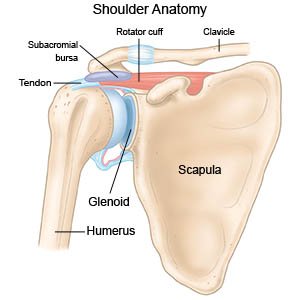Acromioclavicular Joint Reconstruction
Medically reviewed by Drugs.com. Last updated on Aug 4, 2025.
What do I need to know about acromioclavicular joint (AC) reconstruction?
AC reconstruction is surgery to repair a ligament injury. A ligament is connective tissue that connects bones or holds a joint together. The AC is where the highest point of your shoulder bone meets your clavicle (collarbone).
 |
How do I prepare for surgery?
- This surgery may be done as an open surgery or arthroscopically. During an open procedure, one large and several small incisions are made. During an arthroscopic procedure, several small incisions are made. An arthroscope is used to look inside your joint. Your surgeon will talk to you about which kind of surgery is right for you.
- You may be given medicine to use to clean your skin. You will need to use it at home a few days before surgery and on the day of surgery. The medicine will come as a soap to shower with or cloths to wipe the area. Your healthcare provider will give you specific instructions if you need to use this medicine.
- Your surgeon will tell you how to prepare for surgery. You will be told not to eat or drink anything after midnight on the day of surgery. Your surgeon will tell you which medicines to take or not take on the day of surgery. Arrange for someone to drive you home after surgery and stay with you for at least 24 hours.
What will happen during surgery?
- You may be given general anesthesia to keep you asleep and free from pain during surgery. You may instead be given local anesthesia to numb the surgery area. With local anesthesia, you may still feel pressure or pushing during surgery, but you should not feel any pain.
- For open surgery, an incision will be made across the top of your shoulder. For an arthroscopic procedure, several small incisions are made. Your surgeon will insert tools and the arthroscope into the incisions to work on the tendon.
- If you have surgery immediately after an injury, your surgeon may try to line up the ends of the ligaments so they can heal. If surgery happens 3 weeks or longer after an injury, you may also need the ends to be fixed in place. This may be done with pins, plates, or screws. Your surgeon may also use a graft to reconstruct ligaments found under the collarbone. A graft is tissue from a donor. The graft will be fixed in place with a device such as screws or stitches.
What will happen after surgery?
Your arm will be put into a sling for several weeks to keep it from moving while you heal. You will need to sleep in the sling and wear it during the day. You will be able to move your arm at the elbow and move your wrist and fingers. You may have a stiff or painful shoulder after surgery. This is normal and should get better with time and physical therapy. Your providers will tell you when to start having shoulder rehabilitation. These are exercises that will help increase your range of motion.
What are the risks of an AC joint reconstruction?
You may develop an infection or bleed more than expected during surgery. You may also develop a hematoma (collection of blood) or a seroma (collection of fluid) under your skin. Nerves or veins may be injured. You may have an allergic reaction to the fixation device. Any device used to fix the tendon to bone may fail or move out of place. You may have chronic shoulder pain or stiffness, even after physical therapy.
Care Agreement
You have the right to help plan your care. Learn about your health condition and how it may be treated. Discuss treatment options with your healthcare providers to decide what care you want to receive. You always have the right to refuse treatment. The above information is an educational aid only. It is not intended as medical advice for individual conditions or treatments. Talk to your doctor, nurse or pharmacist before following any medical regimen to see if it is safe and effective for you.© Copyright Merative 2025 Information is for End User's use only and may not be sold, redistributed or otherwise used for commercial purposes.
Further information
Always consult your healthcare provider to ensure the information displayed on this page applies to your personal circumstances.
